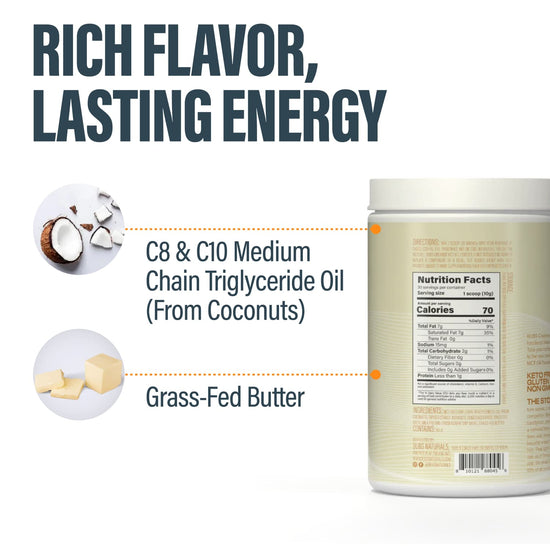Table of Contents
- Introduction
- The Evolution of Coffee Creamer
- What Are Coffee Creamers Made Of?
- The Role of Coffee Creamers in Your Coffee
- The Health Perspective: Are Creamers Good or Bad?
- Alternative Creamer Options
- Conclusion
- FAQ
Introduction
Have you ever taken a sip of coffee from a diner and wondered why it tastes so different than that artisanal brew from your local café? The secret often lies in a small, unassuming container sitting on the table: coffee creamer. This often sweetened, flavored addition has become a staple for many coffee drinkers, especially in the United States. But what exactly does coffee creamer do, and why has it become so popular over traditional milk or cream?
Coffee creamer emerged on the culinary scene in the mid-20th century as a convenient alternative to dairy options. With the rise of fast-paced lifestyles and the need for easy-to-use products, creamers found their way into homes and offices alike. Today, they come in various forms, from liquid to powdered, dairy-based to entirely plant-based. Through this exploration, we aim to uncover the essence of coffee creamers—what they are, how they work, and the implications of using them.
In this blog post, we will delve into the various types of coffee creamers, their ingredients, and the reasons behind their widespread use. We will also discuss their impact on taste, texture, and even the health aspects of your daily cup of joe. By the end of this article, you'll have a comprehensive understanding of coffee creamers and be equipped to make informed choices about how to enhance your coffee experience.
The Evolution of Coffee Creamer
Coffee creamer has a fascinating history that mirrors changes in consumer habits and dietary preferences. Initially, people relied on milk, cream, or half-and-half to enhance their coffee. However, as the 20th century progressed, the need for shelf-stable products became apparent, especially as more people began consuming coffee away from home.
The first commercially available coffee creamer appeared in the 1950s, paving the way for brands like Coffee-Mate, which launched in 1961. This marked a significant shift in how coffee was consumed, introducing flavored options such as hazelnut and vanilla. As coffee culture evolved and diversified, so did the myriad options for creamers, catering to a wider range of tastes and dietary needs.
Today, coffee creamers are ubiquitous in American workplaces, homes, and cafés. They offer convenience, extended shelf life, and a variety of flavors, making them a popular choice for individuals who enjoy customizing their coffee.
What Are Coffee Creamers Made Of?
Understanding what goes into coffee creamers can help demystify their role in your coffee. Most creamers fall into two categories: dairy and non-dairy.
Dairy Creamers
Traditional dairy creamers are often made from milk or cream, providing a rich and creamy texture. However, many products marketed as creamers contain a mix of ingredients, including:
- Sodium Caseinate: A milk derivative that helps stabilize the creamer but may raise concerns for strict vegans.
- Sugar and Sweeteners: Many creamers are sweetened to enhance flavor. This can include cane sugar, high fructose corn syrup, or artificial sweeteners.
- Flavorings: Creamers often come in a variety of flavors, achieved through natural and artificial flavorings.
- Emulsifiers and Stabilizers: Ingredients like mono- and diglycerides help maintain consistency and prevent separation.
Non-Dairy Creamers
Non-dairy creamers are designed for those who are lactose intolerant or prefer plant-based options. These typically rely on:
- Vegetable Oils: Common oils include palm oil or coconut oil, which provide creaminess without dairy.
- Corn Syrup or Other Sweeteners: Similar to dairy creamers, non-dairy options often contain sweeteners to enhance flavor.
- Emulsifiers and Stabilizers: These help maintain the texture and prevent separation in the absence of dairy.
One critical point to note is that while many non-dairy creamers are labeled as "dairy-free," they may still contain sodium caseinate, which is derived from milk. This can be confusing for consumers who are strictly avoiding all animal products.
The Role of Coffee Creamers in Your Coffee
So, what does coffee creamer do? The primary purpose of adding creamer to coffee is to enhance flavor and texture. Here are a few ways in which creamers alter your coffee experience:
1. Flavor Enhancement
Creamers can significantly change the flavor profile of coffee. Whether you’re using a classic vanilla or an indulgent caramel flavor, creamers can add sweetness and complexity to your cup. For those who find black coffee too bitter or strong, creamers can help mask these flavors, making it more palatable.
2. Texture and Mouthfeel
Adding creamer transforms the texture of coffee, giving it a richer, creamier mouthfeel. This can enhance the overall drinking experience, offering a comforting sensation that many coffee drinkers enjoy. The texture is especially noticeable when using creamers high in fat content, which create a velvety consistency.
3. Customization
Coffee creamers provide an easy way to customize your drink. With a wide range of flavors and formulations available, individuals can tailor their coffee to suit their personal preferences. This customization aspect is particularly appealing in social settings, where different tastes can be accommodated.
4. Longevity and Convenience
One of the primary advantages of creamers, especially non-dairy ones, is their extended shelf life. Unlike fresh milk, which spoils within a week, creamers can often last months when unopened. This is particularly useful in workplaces or for those who don’t consume coffee daily. Additionally, powdered creamers can be stored without refrigeration, making them convenient for travel.
The Health Perspective: Are Creamers Good or Bad?
As with many food products, the health implications of using coffee creamers are a topic of discussion. Here are some considerations:
1. Caloric Content
Many creamers are calorie-dense due to their sugar and fat content. If you're watching your caloric intake, it’s essential to be mindful of how much creamer you add to your coffee. Some flavored creamers can add significant calories and sugar to your drink, especially if you’re using multiple servings.
2. Sugar Levels
Sugar content can vary greatly between brands and types of creamers. For those looking to reduce their sugar intake, it's crucial to read labels carefully. Many creamers contain added sugars that can contribute to overall daily intake, impacting health and wellness goals.
3. Artificial Ingredients
Some creamers contain artificial flavors, colors, and preservatives. While these ingredients are deemed safe for consumption, some individuals prefer to limit their intake of processed foods. For those seeking cleaner options, there are brands that focus on natural ingredients, aligning with a more health-conscious approach.
4. Dietary Restrictions
For individuals with lactose intolerance or dairy allergies, non-dairy creamers can be a suitable alternative. However, as mentioned earlier, it's essential to check for sodium caseinate or other milk derivatives in non-dairy options if you are avoiding all animal products.
Alternative Creamer Options
If you're seeking alternatives to traditional coffee creamers, several options can provide similar benefits without the drawbacks. Here are a few to consider:
1. Milk and Cream
For those who prefer a more natural option, whole milk, skim milk, or cream can be excellent substitutes. These options provide a creamy texture and a more authentic dairy flavor without the additives found in many creamers.
2. Plant-Based Milks
Almond milk, oat milk, coconut milk, and soy milk are increasingly popular as coffee additives. These plant-based options can offer a unique flavor while being dairy-free. Each type has its own flavor profile and consistency, so experimenting can lead to a delightful discovery.
3. Homemade Creamers
Making your own coffee creamer can be a fun and rewarding option. By blending milk with natural sweeteners and flavorings like vanilla extract or cocoa powder, you can create a customized creamer that aligns with your dietary preferences. This approach also allows you to avoid preservatives and artificial additives.
Conclusion
Coffee creamers play a multifaceted role in enhancing our coffee experience, from flavor and texture to convenience and customization. They have evolved over the decades to cater to a diverse audience seeking easy, flavorful coffee solutions. However, as with any food product, it's essential to understand what you are consuming and how it fits into your overall dietary goals.
By being aware of the ingredients and implications of using coffee creamers, you can make informed choices that align with your personal health and preferences. Whether you opt for traditional dairy, non-dairy alternatives, or even homemade versions, the world of coffee creamers is vast and varied, offering something for everyone.
As you sip your next cup of coffee, consider the journey of that creamer—from its origins to your mug—and how it enhances your daily ritual. Together, we can explore not just what coffee creamers do, but how they can enrich our coffee experience in meaningful ways.
FAQ
1. Can I use coffee creamer in other beverages?
Yes! Coffee creamer can be used in a variety of drinks, including tea, hot chocolate, and smoothies. It can enhance the flavor and creaminess of these beverages as well.
2. How long does coffee creamer last?
While opened liquid creamers should be consumed within a few weeks, unopened non-dairy creamers can last for months, often beyond the best-by date. Powdered creamers can last even longer, but their flavor may diminish over time.
3. Are there any vegan coffee creamers?
Yes, many brands offer vegan coffee creamers that are made without dairy. Always check the label for ingredients like sodium caseinate, which is a milk derivative, to ensure they meet vegan standards.
4. What are some healthier alternatives to traditional creamers?
Healthier alternatives can include unsweetened almond milk, oat milk, or homemade creamers made from natural ingredients. These options can provide flavor and creaminess without the added sugars and preservatives.
5. How can I make my own coffee creamer?
To make your own coffee creamer, simply combine milk (or a plant-based alternative) with sweeteners and flavors to taste. Vanilla extract, cocoa powder, or even spices like cinnamon can create delicious homemade creamers tailored to your preferences.
Written by:

Butter MCT Oil Creamer
BUBS Butter MCT Oil Creamer (formerly Halo Creamer): Scientifically-Backed Brain and Body Fuel
BUBS Butter MCT Oil Creamer is your go-to for clean, fast-acting energy and focus, no crash included. It blends creamy grass-fed butter with fast-acting MCT oil powder (C8 and C10) to kickstart your day and keep you sharp. The MCTs go straight to work, giving your brain a quick boost while the grass-fed butter supports digestion and gut health.
Together, they help curb cravings, keep you feeling full longer, and support steady energy throughout the day—perfect for fueling your mornings or powering through the afternoon slump.
Starts at $37.00
Shop

